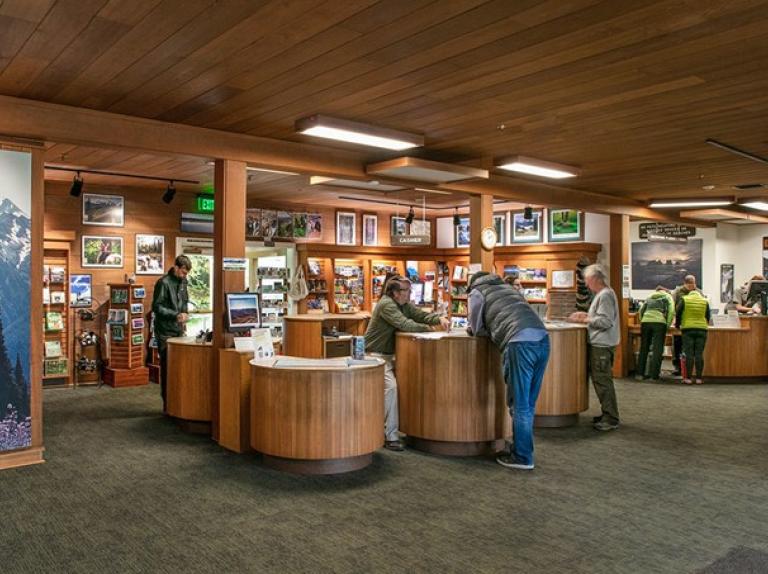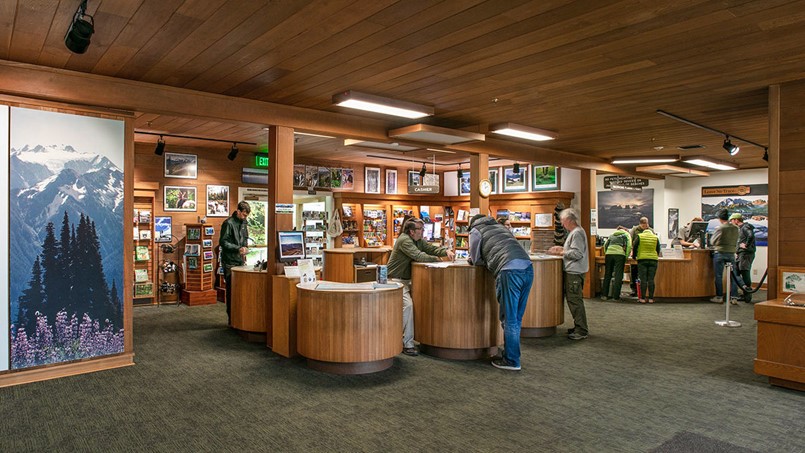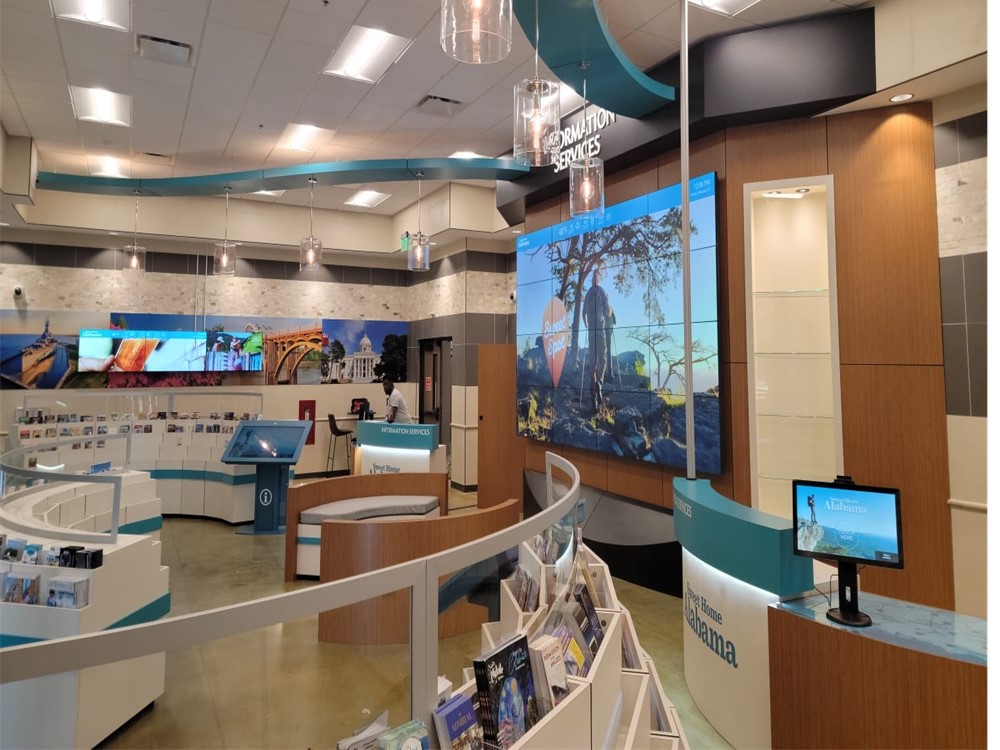
Douglas Ralston of True Omni shares insights and ideas to help organizations take next steps or expand options to benefit member and revenue programs throughout their organization.
At True Omni we see many trends and connection points for travel companies as we look at more mature markets. We see the way in-store media is starting to change and shape business models and trends of how people engage with brands.
In many cases destinations, hotels and retail organizations are just starting to install their first screens and kiosks while others have had videowalls and other mediums for a while now. We know as experience designers this is not a one size fits all situation and due to this, we will try to share some insights and ideas to help organizations take next steps or expand options to benefit member and revenue programs throughout their organization.
If you look at screens in our lives and how they are impacting, you can easily recall when retail brands started introducing screens to promote their brand and product features. This might be considered step one; this established the brand and tells the story along with their other media touchpoints for the consumer. However, as brands noticed the force of in-store advertising the demand for first in-store retail media solutions grew. Many retailers have now expanded into managing thousands of screens in all points of high-traffic areas to build new revenue points and control connection to their brand.
Level 1: Only a few or no screens in key locations
This is the situation in surprisingly many high-traffic areas still today. The reasons for this can be historical and it might just be that there has not been a forerunner in the area to follow. Even though they may be digitally advanced in other areas they have not seen the potential they have for digital signage and interactive experiences because no one has really led the way.
It may feel very difficult for the organization to start investing in both hardware & software with no clear vision of the business case and operating models. You may also wonder who is going to sell the media? Should you hire a media sales agency or rely on your team to create the demand? Or how do we find and install the right hardware?
The most important thing for an organization to understand is you have a place to start, and it can be as simple as thinking through areas of improvement. Maybe it’s just expanding member solutions or ensuring connection to a specific event or season. This can vary but here are a few things to consider when thinking about adding screens to your marketing mix. For a successful trial or pilot, you’ll need to have or consider:
• Consider a few locations ready to install a couple of screens per area.
• Some basic store-level data to create audiences for advertising.
• Note if you are not tracking your visitor count, consider easy cloud-based counters.
• A software partner who can provide a multi-device media platform.
• A basic strategy of what content and information will drive the most value.
• Access to your existing CRM, CMS or media area to make updating content easy.
With these in place, you are ready to start experimenting with location-based media networks across customer information points. This can include Mobile, Signage and Kiosk.
The most important thing for you to learn at this stage is to find out which business models suit your organization the best. These models are explained in detail at the next level for advertising but consider all points of value as you review your media ideas.

Level 2: A moderate screen network
There are several organizations that have already installed a moderate screen network but do not actually use it to its potential for media engagement. Or simply they are setup on systems that are not able to perform easy updates or require a lot of work to manage.
Because of this they are usually outdated or not running consistent content that can connect the brand let alone expend new opportunities. The key is to start defining new ways to manage or easily integrate into your existing content and media. As well as looking at ways to start monetizing these screens through Ads or member and awareness value.
Some also have questions like: Are the screens nothing more than a cost item? Do the screens bring money in? How can we estimate the effectiveness of advertising?
The rise of digital and interactive retail media can change this situation dramatically. There are organizations that are in forerunners position in utilizing their assets to create a substantial new high-margin revenue stream for their organization.
These organizations can now choose & mix from several business models to optimize audience monetization or connection to local members. They can:
1. Sell the audiences directly to advertisers either by their own sales team or with a media sales partner.
2. Offer a self-service for bigger brands & active trade partners. Allow them access to your audience inventory and let them control their own advertising on location.
3. Offer new Member programs- connect new ways to drive member value, allowing you to connect with existing members and grow your membership through advertising and digital engagement.
4. Connect to programmatic marketplaces to get their audiences on sale. This is an option that will allow platforms to sell your inventory or for you to connect to different types of media. It is still only taking its first steps. It’s going to be big, but you need to mix it with other models for now to create a critical mass.
The perfect mix for each organization can differ. It depends on what kind of resources you have available internally as well as ensuring you have the right partners for media management or connections to your content.
For example, an active and forward-looking marketing partner may be able to take on many of the tasks for themselves. While having a partner that provides omnichannel media control with a good Ad platform can help the organization to get started and build out this new medium.
Level 3: In-destination media network ready to scale.
This is growing dramatically, it’s just as we all know travel and hospitality at times are the last to venture into new mediums and technology. The most innovative organizations have already launched their first screens and kiosks in high-traffic areas and are starting to expand in airports, transportation hubs, lobbies, and walking areas. They’ve found suitable business models for their sales and are training their staff to drive membership or open new ways of advertising throughout the destination. The key question for these types of organization is how they can scale the business to the next level.
Most screens in level 2 locations are in places where visitors see them most often or with the highest possible probability. The screen sizes vary, and they can easily be up to 80 inches or several feet in key areas. These high-visibility screens are very versatile and suited for many needs from brand advertising to tactical.
The biggest growth in level 3 can be achieved by adding screens in key areas to drive engagement or access to the location. This creates new advertising possibilities for brands in each category. As a brand has prime visibility with engaging content, bright visuals, even audio, in some cases you can continue to show and drive the value for local stakeholders and advertisers.
We see leading organizations starting to understand the power of digital signage and interactive kiosks, by partnering with attractions, downtown authorities and even opening new partnerships with brands outside of travel. There are countless advertisers wanting to get near to the visitors and travelers with key ads to drive business or brand connection.
Although much of this content continues to come from the retail sector, we are seeing brands in the travel industry starting to realize the hidden potential of these new mediums. From upgrading the visitor center, to connecting partner areas into brand engagement opportunities. Besides just screens with videos we are seeing event information, ticketing opportunities, and new ways to connect social media. Consider interactive kiosks as well which help improve convenience but also help visitors and guests get 24x7 Information while providing relevant information and marketing opportunities.

We at True Omni have been in the forefront of digital and interactive signage for years now and have collaborated with many key partners in this area. Our Omnichannel media platform and expertise can easily connect with your existing systems and provide new ways for your organization to enable new marketing and revenue channels. Book a free consultation meeting with us to see how we can transform your marketing and member programs together.
We are excited to be a part of this transition and explore new ways to connect, collaborate, and experience everything a destination has to offer. If you need assistance in elevating your team to the next level in providing a next-generation visitor experience, we are just one click away. Contact us at [email protected] or call 888-334-6664.


